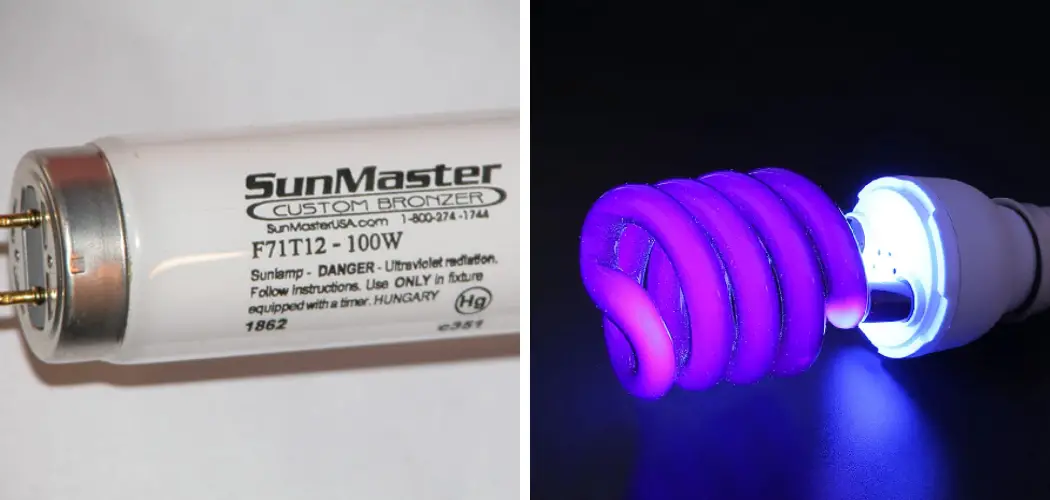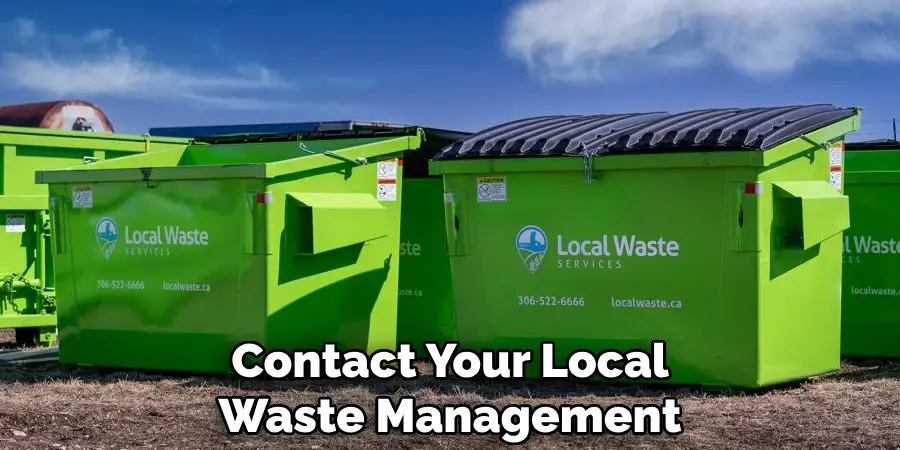Are you a tanning bed owner who wants to know how to dispose of your tanning bed lamps? Look no further! In this guide, we will discuss the proper steps and methods on how to dispose of tanning bed lamps safely and responsibly.
Tanning bed lamps contain hazardous materials that can harm the environment if not disposed of properly. As such, it is crucial to follow the appropriate steps and abide by local regulations when disposing of these lamps. This introduction will guide you through safely and responsibly getting rid of used tanning bed lamps, ensuring that you contribute to environmental conservation while adhering to the legal obligations in your area.
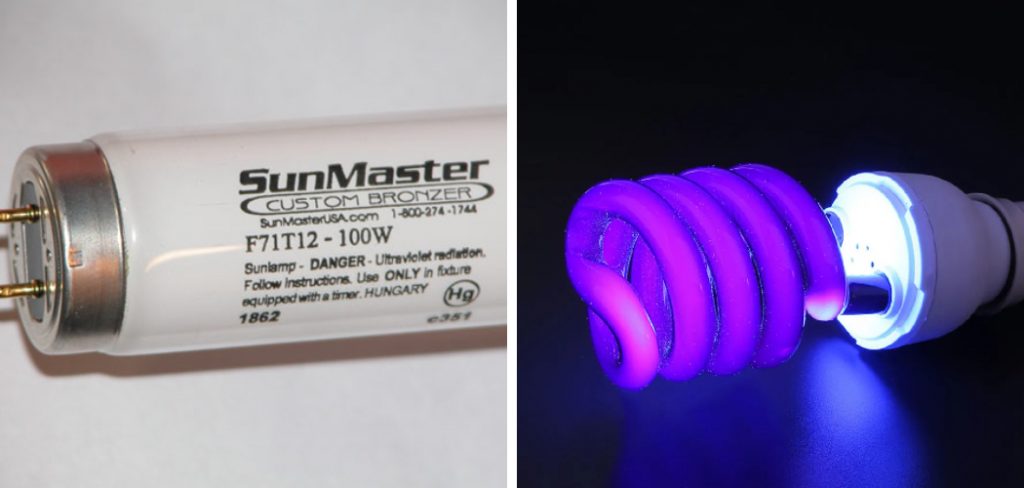
We’ll cover the identification of hazardous components, finding suitable disposal facilities and other best practices to manage the impact of tanning bed lamp disposal.
What are the Useable Parts of Tanning Bed Lamps?
Before we get into the disposal process, let’s first understand what parts of a tanning bed lamp can be reused or recycled. It is essential to properly dispose of all components of the lamps, as they contain hazardous materials that can harm humans and the environment.
The two main components of a tanning bed lamp are the bulb and the ballast. The bulb is responsible for emitting UV radiation, which is what creates the tanning effect on the skin. The ballast, on the other hand, regulates the flow of electricity to the bulb.
Neither of these components can be reused or recycled due to their hazardous materials and potential damage from use in a tanning bed. However, they must be disposed of properly to avoid negative environmental impacts.
Why Proper Disposal is Important
Proper disposal of tanning bed lamps is essential for several reasons. First, it helps protect the environment from harmful substances that may be present in the lamps. Tanning bed lamps typically contain mercury, a toxic chemical known for its damaging effects on ecosystems and human health. If not disposed of properly, these lamps can release mercury into the environment, polluting soil and water sources.
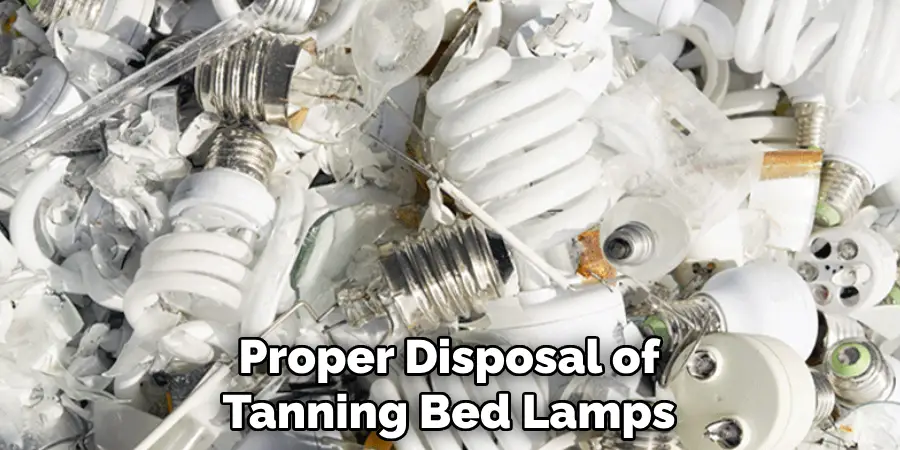
Proper disposal also helps prevent injuries or accidents caused by exposure to broken or damaged tanning bed lamps. The glass in these lamps can shatter easily, creating sharp edges that can cause harm if not handled carefully.
Lastly, disposing of tanning bed lamps properly ensures compliance with local regulations and laws. Failure to do so may result in fines or penalties, which can be avoided by following the proper disposal methods.
What Will You Need?
Before disposing of your tanning bed lamps, ensure you have the necessary equipment and supplies. These include:
- Protective gear such as gloves and safety goggles
- A sealed container for storing used lamps
- Packing materials (such as newspaper or bubble wrap) to prevent breakage during transport
- A permanent marker for labeling the container
- Information on local regulations and disposal facilities.
Once you gather all the necessary equipment, you can dispose of your tanning bed lamps.
10 Easy Steps on How to Dispose of Tanning Bed Lamps
Step 1. Turn off and Unplug the Tanning Bed:
Before handling tanning bed lamps, ensure that the bed is turned off and unplugged from the electrical outlet. This will prevent any electrical hazards while removing the lamps. Additionally, make sure you are wearing appropriate protective gear before proceeding.
Step 2: Allow Lamps to Cool Down:
Wait for the lamps to cool down completely after the tanning bed is safely turned off and unplugged. This can take anywhere from 15-30 minutes. Attempting to handle the lamps while they are still hot can result in burns or breakage, so patience during this step is crucial for safety.

Step 3: Remove the Lamps Safely:
Carefully remove the lamps from the tanning bed once the lamps are cool to the touch. Most tanning beds will have a straightforward process for lamp removal, usually involving twisting the lamp gently to release it from its socket. Be sure to handle the lamps by their ends and avoid touching the glass directly, as oils from your skin can create hot spots on the lamp, which might cause it to crack.
Step 4: Secure the Lamps for Transport:
Secure each lamp individually with packing materials—such as newspaper or bubble wrap—to prevent them from breaking during transport. Delicate handling is critical as even minor cracks can lead to leakage of hazardous substances. Once each lamp is wrapped, place it horizontally in a sealable container and seal it tightly. Use a permanent marker to label the container with ‘Hazardous Waste – Tanning Bed Lamps’ for clear identification.
Step 5: Locate a Suitable Disposal Facility:
With your tanning bed lamps securely packaged, the next step is to find a disposal facility that handles hazardous waste. Contact your local waste management authorities or search online for facilities that accept materials containing mercury. It’s essential to choose a facility that follows environmental regulations for hazardous waste to ensure the lamps are disposed of safely and responsibly. Make a list of potential facilities, their contact information, requirements, and disposal fees, if any.
Step 6: Inquire About Disposal Details
Before you drive to the disposal facility, call ahead to confirm their policies and hours of operation. Inquire about any preparatory steps you need to take or forms that must be filled out upon arrival. Verify if there are any costs associated with the lamp disposal and what payment methods are accepted. This upfront communication will prevent any mishaps or wasted trips and ensure a smooth disposal process.
Step 7: Transport the Lamps Carefully:
It is essential to transport the lamps safely to the disposal facility. Ensure that the container is secured in your vehicle to prevent any movement that can cause the lamps to break. Drive cautiously, especially over bumps or uneven roads. The goal is to get the lamps to the disposal site intact and without any spillage of hazardous materials.
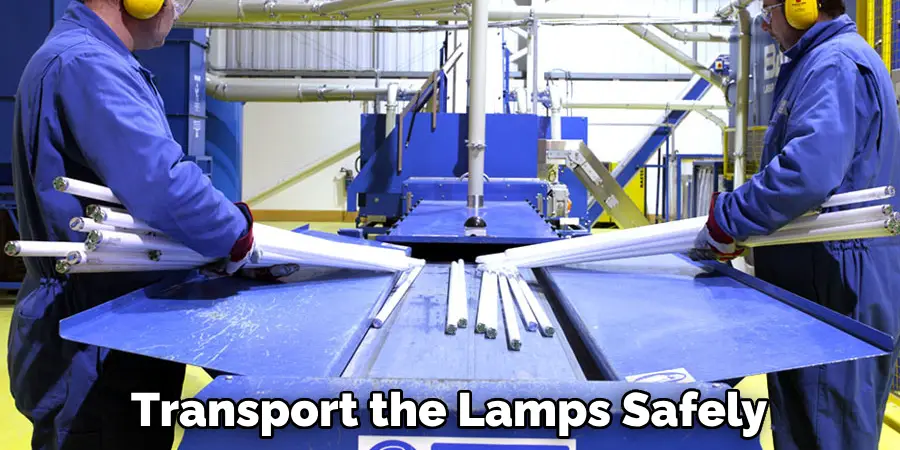
Step 8: Comply with Facility Protocols:
Upon arriving at the disposal facility, adhere to the guidelines provided by the staff. These could include specific places to unload the lamps, wearing additional safety gear, and following specific procedural steps for handing over the hazardous waste. Cooperation with these protocols ensures the safety of everyone involved and contributes to the proper handling and disposal of the tanning bed lamps.
Step 9: Obtain a Disposal Receipt:
After successfully handing over the tanning bed lamps to the disposal facility, ensure you obtain a receipt or certificate confirming the proper disposal of your hazardous waste. This documentation is crucial as it serves as proof that you have complied with legal and environmental regulations. Keep this paperwork safe; you may need to refer to it in case of any future inspections or inquiries regarding your disposal practices.
Step 10: Record and Reflect on the Process:
Once the disposal process is complete, it’s helpful to take note of your experience for future reference. Record the date, details of the disposal facility, costs incurred, and any observations or insights gained from the process. Reflecting on the disposal process can offer lessons that could streamline future disposal efforts and further your commitment to responsible environmental practices.
Following these ten steps, you can safely dispose of your tanning bed lamps and contribute to a cleaner and healthier planet. Remember, proper disposal of hazardous waste is necessary and an essential responsibility we have for our environment and community.
5 Additional Tips and Tricks
- Contact Local Waste Management: Contact your local waste management facilities to inquire about the proper disposal of tanning bed lamps, as they will have the most accurate information and regulations for your area.

- Use a Recycling Service: Look for specialized recycling services that dispose of tanning bed lamps, ensuring that harmful substances, like mercury, are safely managed.
- Manufacturer Take-Back Program: Check if the lamp’s manufacturer offers a take-back program. These programs allow for responsible recycling and are often free of charge.
- Community Hazardous Waste Collection Days: Participate in community collection days designated for hazardous waste. The city or local government usually organizes these events periodically to collect items like tanning bed lamps.
- Educate Yourself About State Regulations: Different states may have varying regulations about the disposal of tanning bed lamps due to their hazardous nature. Familiarize yourself with your state’s guidelines to ensure you dispose of the lamps in compliance with local laws.
With these additional tips, you can be confident that you are disposing of your tanning bed lamps responsibly and safely.
6 Things You Should Avoid When Disposing of Tanning Bed Lamps
- Do Not Throw in Regular Trash: Avoid discarding tanning bed lamps in your regular household garbage as they contain potentially hazardous materials that can harm the environment.
- Avoid Illegal Dumping: Never resort to illegal dumping of tanning bed lamps, even in remote areas, as this can lead to environmental pollution and legal consequences.
- Don’t Ignore Lamp Specifications: Each type of lamp may have specific disposal requirements. Adherence to these can result in proper handling of dangerous components.
- Steer Clear of General Landfills: Tanning bed lamps should not be taken to general landfills that are not equipped to handle hazardous waste, as this poses a risk to ground and water sources.
- Never Assume All Recycling Centers Accept Them: Don’t assume that all recycling centers are appropriate for tanning bed lamps. Confirm that they accept and can properly process this type of specialized waste.
- Avoid Breaking Lamps: If a lamp breaks, do not attempt to clean up the pieces yourself. Contact your local waste management or recycling service for proper disposal instructions.
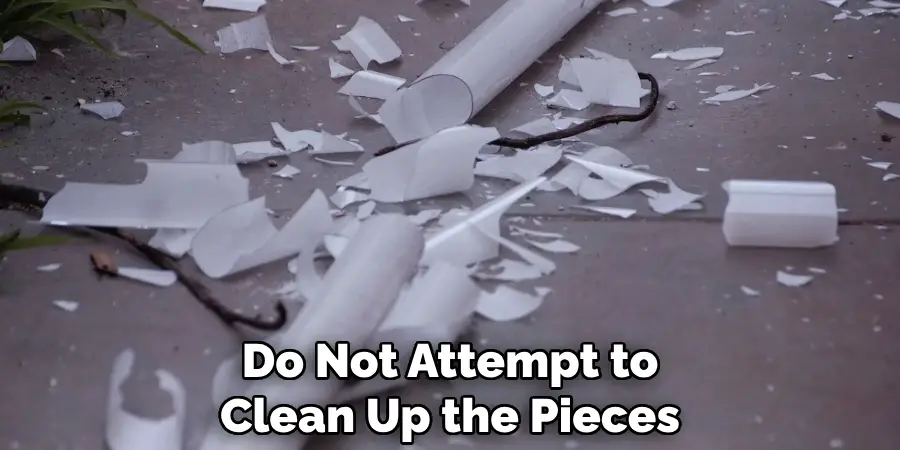
By avoiding these actions, you can ensure that tanning bed lamps are disposed of safely and responsibly, minimizing their negative environmental impact.
Some Frequently Asked Questions
1. How Do I Know if My Tanning Bed Bulbs Are Bad?
If you notice any of the following signs, it may be time to replace your tanning bed lamps:
- The bulbs are visibly damaged or cracked.
- The bulbs are not producing enough UV light.
- The bulb’s color has changed significantly.
- There are inconsistent results in tanning sessions.
- You hear a buzzing or humming noise when the lamp is turned on.
If you experience any of these issues, it’s best to consult the manufacturer or a professional technician for further guidance. Always replace tanning bed lamps according to the recommended schedule to ensure maximum efficiency and safety.
Overall, proper disposal and maintenance of tanning bed lamps are essential for your health and the environment, so follow these tips and guidelines for responsible management.
2. What Kind of Light is in a Tanning Bed?
Tanning bed lamps emit a mixture of UV-A and UV-B light. These types of ultraviolet rays are responsible for producing a tan on the skin. However, it’s important to note that tanning bed lamps emit significantly higher levels of these rays than natural sunlight, which can increase the risk of skin cancer and other health concerns. Limiting exposure and following proper safety precautions when using tanning beds is crucial.
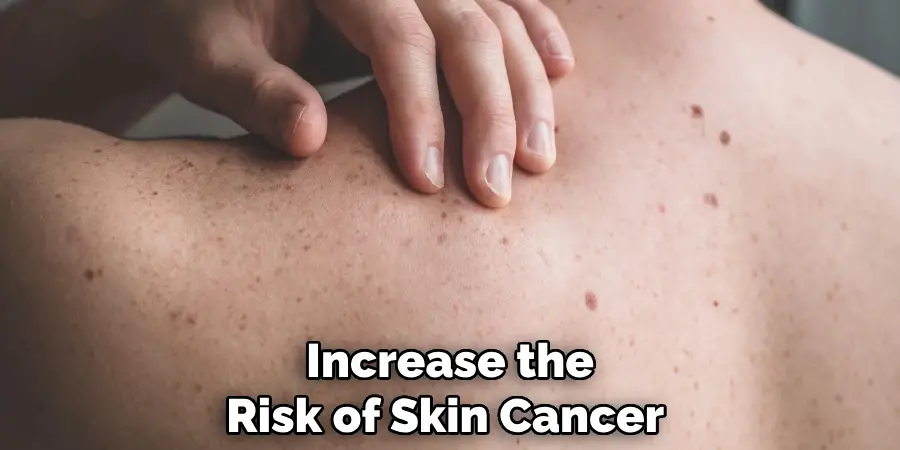
In addition to the UV-A and UV-B light, some tanning bed lamps also emit blue or red light, which is said to have skin-rejuvenating properties. However, there is limited scientific evidence to support these claims, and it’s essential to consult with a healthcare professional before incorporating such treatments into your routine.
3. What is the Safest Tanning Bed?
There is no such thing as a completely safe tanning bed, as all tanning beds emit UV radiation that can damage the skin and increase the risk of skin cancer. However, there are some features to look for in a tanning bed that can make it safer to use:
- Low-pressure Bulbs: These bulbs emit less UVB light compared to high-pressure bulbs, making them less damaging to the skin.
- Built-in Timers: This feature helps prevent overexposure and allows for controlled tanning sessions.
- Protective Eyewear: Ensure your tanning bed has proper eye protection to shield your eyes from harmful rays.
It’s important to remember that even with these features, using a tanning bed is not completely safe and should be done in moderation and with caution. It’s always best to consult with a healthcare professional before starting any tanning routine. Overall, being informed about the proper disposal and safe usage of tanning bed lamps can help reduce their negative impact on both your health and the environment. Stay responsible and stay safe!
4. What Are Safer Alternatives to Tanning Beds?
If you’re looking for a safer way to achieve a sun-kissed glow, several alternatives to tanning beds can give you similar results without the risks. These include:
- Self-tanning Lotions: These products can provide a temporary tan without UV exposure.
- Spray Tans: Similar to self-tanning lotions, spray tans offer a temporary tan without UV exposure.
- Bronzers: Makeup products such as bronzers can give the appearance of a tan without any UV radiation.
- Sunless Tanning Booths: These booths use an FDA-approved chemical called DHA to darken the skin temporarily without UV light.
Additionally, spending time outdoors and using sunscreen with proper sun protection factor (SPF) can help achieve a natural tan safely. Remember, there is no safe way to tan, and it’s important to prioritize your health and well-being over achieving a certain appearance. Be responsible and make informed decisions when it comes to tanning practices. Your skin will thank you in the long run!
5. Are Tanning Beds Sanitary?
Tanning beds can harbor bacteria, fungi, and viruses if they are not properly maintained and sanitized. This is because tanning beds create a warm and moist environment ideal for these microorganisms to grow. Therefore, it’s crucial to ensure that tanning beds are regularly cleaned and disinfected to prevent the spread of germs.
Here are some tips for keeping your tanning bed sanitary:
- Wipe Down Surfaces: Use a disinfectant wipe or spray to clean all surfaces of the tanning bed before and after each use.
- Wash Hands Before and After Make sure to wash your hands with soap and water before and after using a tanning bed to prevent cross-contamination.
- Use Protective Barriers: Consider using a towel or clean sheet to cover the tanning bed surface before use.
- Avoid Sharing Tanning Beds: It’s best not to share them with others, as this increases the risk of spreading germs.

By following these simple steps, you can help ensure your tanning bed is sanitized correctly for safe and hygienic usage.
Conclusion
Tanning bed lamps should be disposed of properly and responsibly to avoid harm to the environment and human health. This includes following the manufacturer’s recommended replacement schedule and proper disposal methods, such as recycling or safely disposing of old lamps.
Additionally, it’s essential to prioritize your safety when using tanning beds by following guidelines for safe usage, maintaining sanitation, and considering alternative options for achieving a tan. Being informed and responsible can minimize the negative impact of tanning bed lamps and ensure a healthier and safer tanning experience.
Hopefully, this guide has provided you with valuable information on how to dispose of tanning bed lamps and ways to ensure safe and responsible usage. With these tips, you can enjoy your tanning experience while prioritizing your health and the planet’s well-being. Remember, self-care is essential, but always care for yourself and others!

